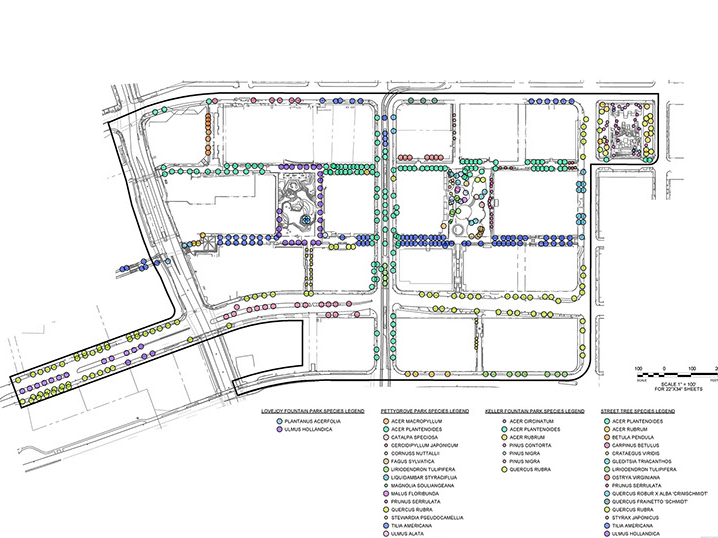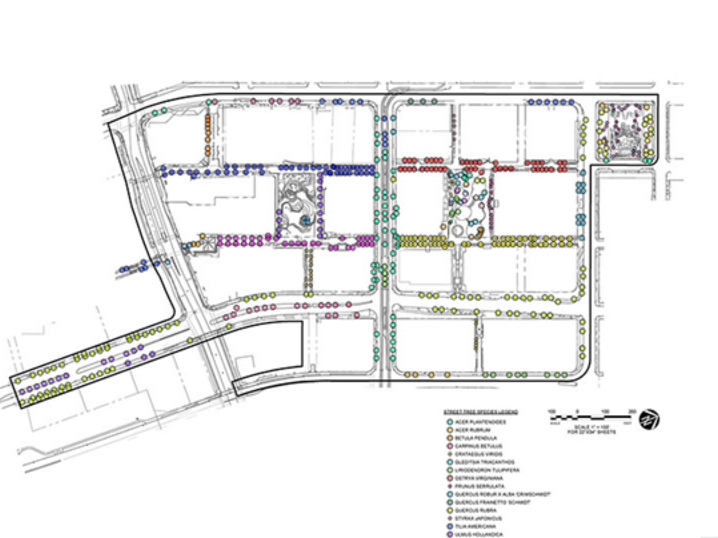Portland Open Space Sequence Vegetation Management Planning
South Auditorium District Vegetation Best Management Practices
Portland, Oregon
The planting design for the original Portland Open Space Sequence was formulated by Lawrence Halprin and Associates for the design and construction of three major open space projects. The design and planting concept originated with Halprin’s first design commissions, Phase I: Lovejoy Plaza and Pettygrove Plaza (1964-1965); and Phase II: the design of the malls linking the Lovejoy Plaza, Pettygrove Park and the addition of the Source Fountain (1965-1967). Between 1968-1970, the open space sequence was extended yet further to capture Forecourt Fountain which lay outside the formal South Auditorium Urban Renewal Area (URA). Upon the completion of Forecourt Fountain (renamed to honor Ira Keller), the planting design principles and a comprehensive vision of the district coalesced.
From 1964 to today, various properties abutting the district have continued to be developed and, in some instances, are experiencing a second cycle of development since the South Auditorium Plan was initiated. The addition in 2004 to the Portland Street Car extension on SW Harrison and the 2015 addition of the MAX Light Rail on SW Lincoln has accelerated recent interest in the area.
In 2013 the Halprin Open Space Sequence was added to the National Register of Historic Places to protect the urban design vision and the character defining elements. Today we find ourselves in a cycle of rediscovery and development of private properties, some that have been void of structures for nearly 60 years.
Renewed interest in the district has led to many questions about South Auditorium Plan District, the original vision and design intent. The ensuing development and apparent impacts to the maturing landscape raises specific questions about how the planting design supports the original vision. Answers to these questions depend on a clear definition of the design intent of the planting design for the parks and pedestrian malls. The trees in the district are reaching maturity uniformly and in need of additional care in the form of wholesale renovation and complete restoration. The unintended overcrowding of trees, deferred maintenance and evolving changes to micro climatic conditions such as sun exposure, depleted soil quality and non-functioning irrigation are some of the issues accelerating decline.

